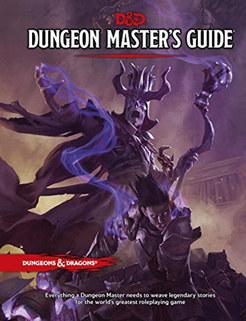It’s a gift when you discover an NPC in an adventure that gives you great pleasure to roleplay. One that makes that list is Joy Hultmark from Lysa Penrose’s “Purging the Blood“. Lysa uses three paragraphs to describe Joy, and that’s what was needed.
Joy has clearly defined goals, a personality, and a reason for interacting with the PCs that allows both the DM and players to role-play. It’s worth checking the adventure out to give you an idea of how to do it right!
Of course, not every group will role-play well using Joy. However, as she’s only one of several well-drawn NPCs in the adventure, it makes it more likely that one of the NPCs will click for you and your players.
The key to good NPC design comes from an understanding of their role in the plot. The more they appear in the adventure, the more the DM has to understand their backstory and character. If you only use an NPC in a single scene, less information is required.
Where do you put that information? If they only appear in a single scene, their description should be all contained on the page with that scene. I’m fond of having a sidebar calling out their personality, with the details of their interactions in the main text.
If the NPC appears throughout the adventure, then you need to detail more of their history and motivations. I’d put those in the introduction. (I dislike putting this in the appendix, as it’s more likely a DM will see the early material rather than that hidden away). Place details on their interactions with the adventurers in the main adventure text when they appear.
It’s nice having an appendix that summarises all the main NPC and some context for them, so you can reference that during play, but I believe it’s a mistake to make that the primary source of information about the characters. If it is, note that in the text. “You meet Safira (see Appendix A)”. NPCs tend to be the most complex to understand and write, so make sure the DM knows where to look to find the relevant information! Scattering it over three or four places in the adventure – as I’ve seen some do – is a mistake.
So, what do you need to describe an NPC? The basics you need to consider:
- Why are the players interacting with them?
- How do they react when the players interact with them?
- What can the players do to get their help?
Notes on an NPC’s personality guide you on portraying them, and working out their desires is crucial if they’re meant to provide a meaningful encounter.
Just having a guard blocking a passage who lets the players by if they succeed at a DC 15 Charisma (Persuasion) check isn’t that interesting. What’s the interaction? Are you rolling a die and nothing more? Now, there are times when just rolling a die fits the playstyle of a group, but if you’re writing an adventure for more than just yourself, consider what other players might want!
My primary technique is to consider what the NPC wants. I try to design something – or, more likely, several things – that the characters can provide for them, whether they are tasks, items, magic or advice.
It’s got to be possible for the players to achieve, and they also need a way to find out what it is! Few things are more frustrating than an NPC that only sits there going “no” and providing no clue as to what they want.
A note: role-playing encounters can be over incredibly quickly if it’s straightforward to deliver what they want. If you want the encounter to go longer, you’ll need a bit of complexity in the description of the interaction. DMs vary significantly in how well they portray NPCs. I, myself, tend towards the “poorer” end of the spectrum, with a few exceptions. I prefer to have notes in the encounter text to give me a good grasp of the character. Great role-playing DMs can improvise and add a lot of description not in the text, but it’s better to assume that not everyone running your adventure is great!
So, in the case of that guard, you might decide:
- The guard is there to stop people going down the hall. The characters want to proceed past the guard.
- The guard stops characters moving past, but is willing to talk – he’s a bit lonely and appreciates the conversation. He fiddles with an engagement ring during the discussion (draw the PCs attention to it!)
- The guard is worried about his love (who works at a nearby tavern). There’s a person that’s been hassling them. Characters might proceed by promising to look after them, or possibly by threatening harm!
There you have the role of the guard (an obstacle), how he interacts with the players (more than just telling them no!) and a couple of potential solutions for getting by. I’d still want to give the guard a couple more personality traits to make them easier to roleplay, but you get the idea.
The objective of any NPC design is not to limit the DM, but to provide options for the DM to use in the game. If there’s nothing for the DM to work with (there’s a guard!), it’s much harder for those DMs who are less comfortable improvising role-playing scenarios. Don’t overburden with detail, but provide material that gives the sense of how the NPC interacts with the PCs. After all, that’s why they’re in the adventure!

